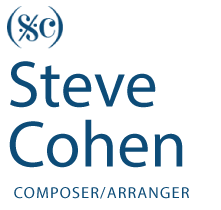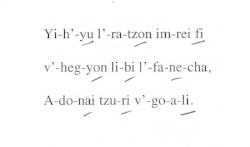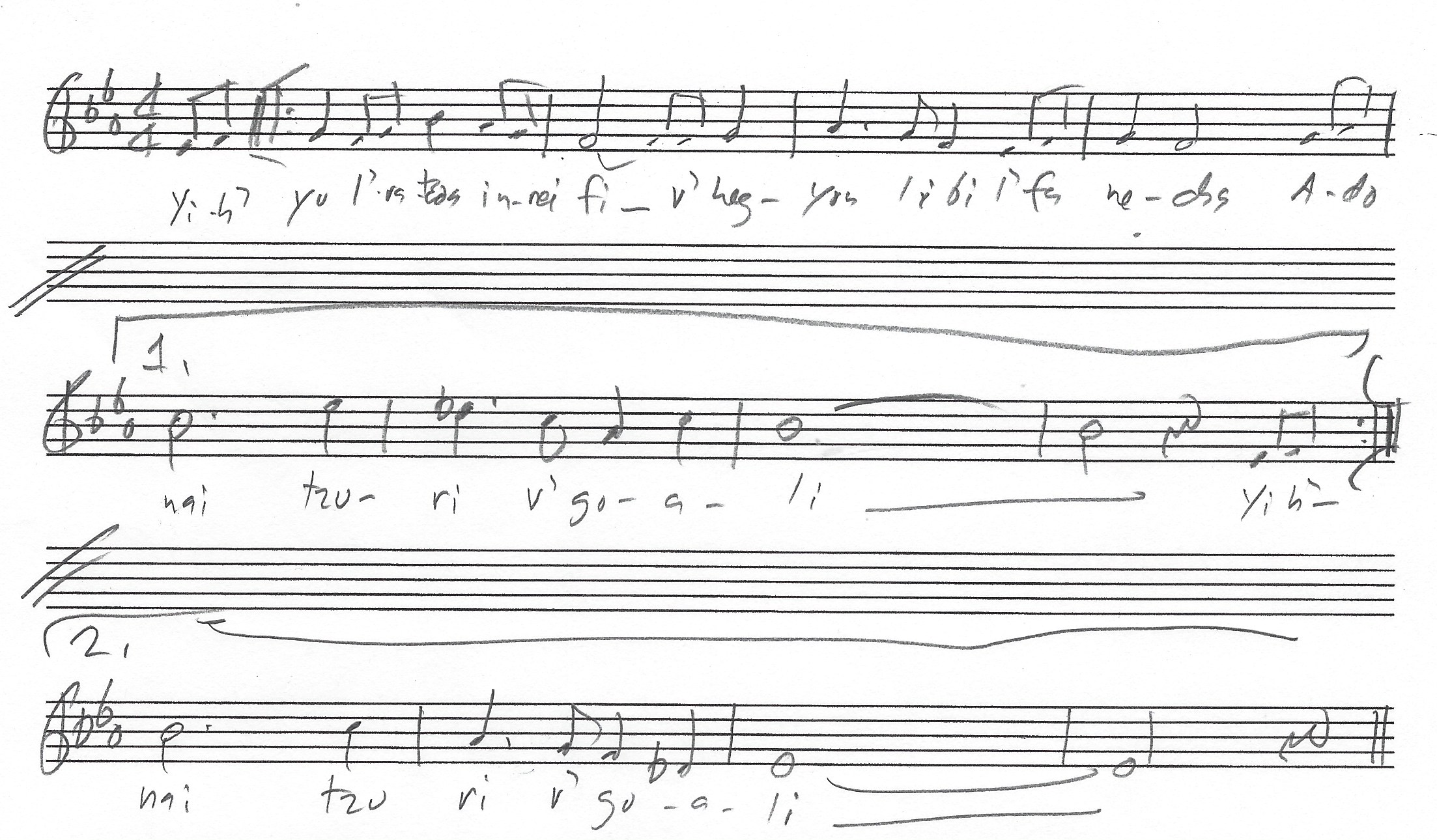1 October 2014
I’ve been writing music for the Jewish Synagogue since 1997. After the warm reception for my setting of Mi Chamocha (2008), it seemed like a good idea to set the rest of the Shabbat Evening Liturgy, and so I tackled Yism’chu, Kiddush, Shalom Aleichem, and others.
For all of these, I kept to writing for SATB choir a cappella, including a solo part for a cantor, when appropriate.
At one point, I was planning to gather all of these pieces together as a complete Shabbat Evening Service. Lately, I’ve more-or-less abandoned the idea of a complete service, although I still intend to set as many texts from the Liturgy as I can. Complete services seem to be less in favor now than in the past, when composers like Max Helfman and Isadore Freed were writing them. Nowadays, cantors assemble very eclectic mixes for their music menus, drawing on music from the 18th, 19th, 20th, and 21st Centuries. Maybe that’s good, maybe that’s bad, but that’s the way it is. All I can do is write as well as I can, keep practical considerations in mind, and hope for the best. I’ve been very fortunate so far.
It occurred to me that I don’t always need to write for an a cappella group, and it might be a good idea if I brought in a keyboard instrument when it’s warranted. I decided to write a setting of Yih’yu L’ratzon for soprano solo, mixed (SATB) choir, and keyboard. (could be organ, piano, electric piano, whatever)
The text for Yih’yu L’ratzon comes from Psalm 19, Verse 14. It says, “May the words of my mouth and the meditations of my heart be acceptable to You, O, God, my Rock and my Redeemer.” In the Shabbat service, this text (or Oseh Shalom) is read after a silent meditation just before the Torah scroll is taken out of the Ark, and read.
When I set a liturgical text, I usually begin by analyzing the phrases, seeing which words get emphasized, and which syllables within the words get stressed. It seems to me that music should illuminate the text, so it’s crucial to get the stresses right, and not put the em-PHA-sis on the wrong syl-LA-ble. Here’s how I marked up a copy of the text in preparation to set it to music.
Now that I can see where the proper stresses are, I read the text and see if any rhythms suggest themselves. Sure enough, they do.
I see I’ve set the entire text in only 8 measures. This suggests to me that I can do it at least twice. I can consider each iteration of the text to be an A section. It occurs to me that I can, and should have the first A end on the dominant (the V) so we can go back and sing it again, and the second A should end on the tonic (the I). So let’s add some pitches to those rhythms.
Having done two A sections, we need to hear something else now, a B section. What should I use as a text for a B section? How about the same text again, but this time sung in English rather than Hebrew? Sounds good to me!
And then we should go back for one more A section, but we should have at least one new element in place so the listeners don’t get bored by an exact repetition of what they’ve already heard. And we need an ending this time.
Musical structure isn’t just formulas out of theory books. The musical forces for which you’re writing can also inform, and sometimes even dictate how you’ll assemble and present your ideas. I’ll show you the form just as bare bones, and then show you what happens when consideration of the personnel available is taken into account.
A
A
B
A
Intro - Keyboard only
A - Solo Voice (text in Hebrew)
A - Solo Voice. with a choral background.
B - Choir takes over, sings text in English.
A - Choir sings the Hebrew text, descant part for Solo Voice.
I was lucky in that the choral background I wrote for the 2nd A section had an Alto line that answered the solo part. That gave me the basis for the descant for the Solo Voice in the 3rd A; just take the Alto line up an octave. The tune sat low enough that I could assign it to Altos and Baritones, with harmony parts for Sopranos and Tenor, giving us a rich color we had not yet heard, and a fuller texture as befits the culmination of the piece.
To end, I had the melody cadence on the tonic, but I harmonized it to move away from the tonic chord, making it imperative that we repeat the last phrase and really get to the harmonic home base, this time ending high with a held note for the Solo Voice to hold while the choir sings one more cadence, built on material from the keyboard introduction.
At this time, (Monday, 6 October 2014) there has not been a live performance yet of this new setting of Yih’yu L’ratzon. I am hoping that changes soon, and I will post an update when and if that happens. Until then, I only have an mp3 of the MIDI playback to share with you. It’s correct and accurate, but soulless. Nevertheless, enjoy!
Update
on 2014-12-10 13:40 by Steve Cohen
UPDATE: Yih’yu L’ratzon WILL be performed, Friday, 12 December 2014, at Temple Emanu-El in New York City. This is one of four of my choral settings in the music menu for the Shabbat evening service. Emanu-El records its services to stream over the internet. I’ll post recordings here soon.
Update
on 2015-12-31 23:24 by Steve Cohen
UPDATE: Yih’yu L’ratzon was premiered on 12 December 2014, by Cantor Lori Corrsin and the Emanu-El Choir (Dr. Andrew Henderson, organist) at Temple Emanu-El in New York, NY. Click the audio player below for the recording of that performance.



